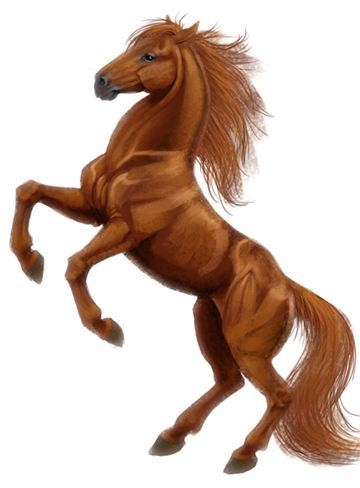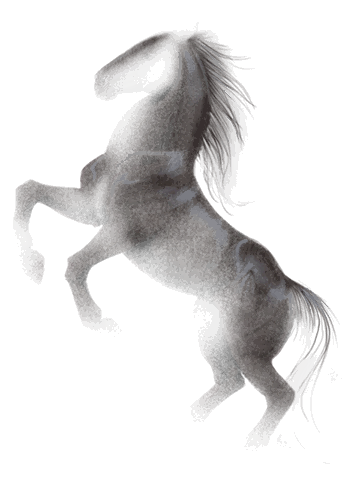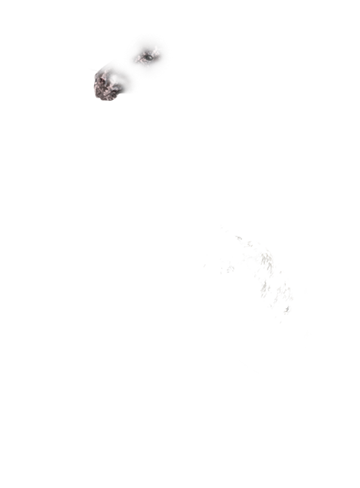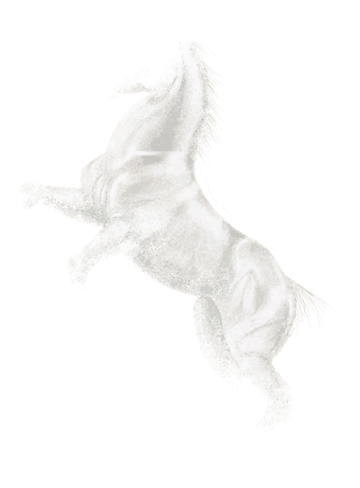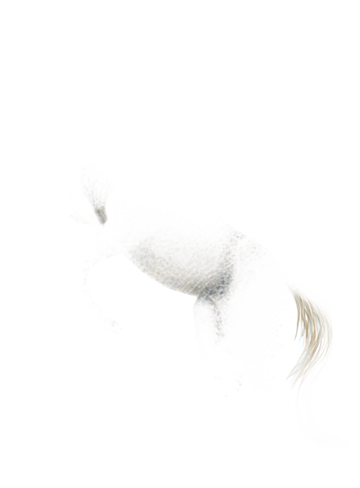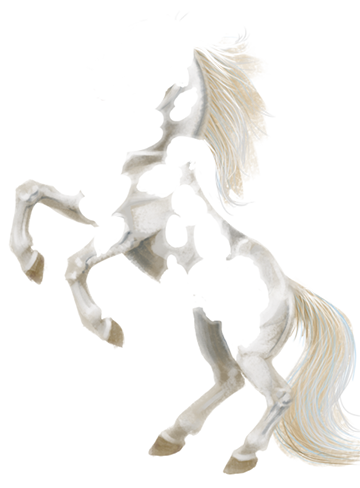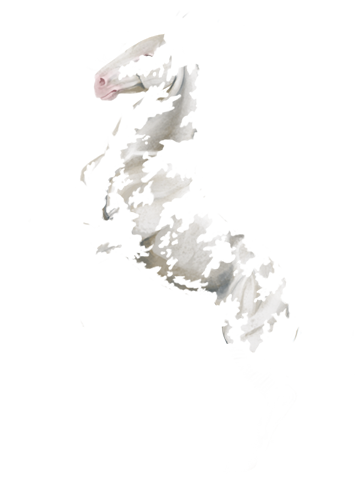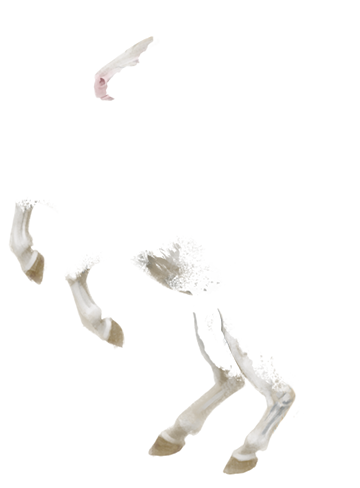
Jump to Game Window Jump to Game Window
The term pinto refers to any number of horses with white spotting patterns. Although the base color underneath these white spots is irrelevant, you may hear the terms piebald, skewbald, and tri-colored. These simply refer to the most common base colors of black, chestnut, and bay respectively.
While a pinto horse can be of any breed so long as it displays the proper color patterning, a paint refers to pinto horses only of the Quarter Horse or Thoroughbred breeds. Therefore all paints are pintos, but not all pintos are paints.
There are four different genes that can result in a pinto horse: tobiano, frame overo, sabino, and splashed white.
Tobiano
The tobiano gene causes large, rounded spots arranged in a vertical pattern. The spots will be of the base color on a white background. Typically the legs will be white from the knees down and white will cross over the horse's back between the withers and dock of the tail. The face is usually colored.
Tobiano is an allele on the KIT gene, along with sabino, making their homozygous states mutually exclusive. KIT will be explained more on the next page.
Tobiano is also linked to black, which means that a heterozygous tobiano will only pass on on its tobiano with a specific allele of black. Some tobianos will only give spots to their red offspring, while others might only give spots to their black offspring.
Frame Overo
While both tobiano and overo give rise to white patches, those patches are opposite in features. A frame overo horse will have irregular white patches arranged in a horizontal fashion over its base color. They are usually jagged rather than rounded and typically have a sharp edge. The legs of an overo horse are usually colored, and its face is at least partially white. Blue eyes are not uncommon.
Frame overo is associated with Lethal White Syndrome, and overo breeders must take special care to never breed together two horses that both have overo. If two horses with overo are bred together, then there is a 25% chance the foal will die. Overo breeding is complicated further because sometimes a horse will display so little white patching that it does not get properly identified as overo. For this reason overo breeders are encouraged to get their horses genetically tested.
Sabino
Sabino is an incomplete dominant allele of the KIT gene. In a heterozygous state it causes a distinctive white spotting pattern with irregular rough edged white patches on 2 or more legs and the face. They also frequently have spots or roaning on the belly and flanks. The white patches will have pink skin, but even when white overlaps a sabino's eyes, they do not have blue eyes.
Homozygous sabino horses are typically at least 90% white at birth, and can be difficult to tell apart from a dominant white horse.
Splashed White
The splashed white gene causes a horse to look as though its feet and face were dunked into white paint. It will have blue eyes, even if its eyes are not covered in white, and will often have a white tail tip. Splashed white is similar to sabino in that both will have white feet and faces. However, splashed white markings are crisp and blocky whereas sabino is rough and roaned.
A minimally marked splashed white is often not identified as such, since it can include few or no white markings at all. One tell tale sign that a horse is a minimally marked splashed white is that the horse's facial white will be crooked or skewed to one side. Unlike sabinos, a minimally marked splashed white will usually have a dark upper lip. Previous: Roan, Rabicano, and Sooty - Home - Next: The KIT GeneJump to Complete Genetics
